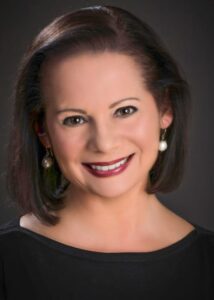By Dr. Susan Enfield, Superintendent, Highline School District
Guest Blogger

When we made the decision in Highline to close schools in March, I found myself increasingly frustrated that conversations about planning for the fall focused primarily on logistics around protective personal equipment (PPE), seating capacity on school buses, etc. I agree that safety is paramount. I was also adamant, however, that we should be focusing on how to seize this moment to effect changes in public education that so many of us have wanted to see for so long. In the ensuing weeks and months, however, I came to the realization that I was sadly deluded. The sheer magnitude of planning for hybrid and/or distance learning proved to be more detailed and complex than I would have ever imagined. The innovative, elegant solutions I thought possible were not, given the fiscal, staffing, and safety constraints by which we were bound.
In Highline, we had the benefit of working with an incredibly talented team from McKinsey thanks to our partnership with Chiefs for Change, who has also been a tremendous partner and resource for us. Even with this technical assistance and support, however, our dedicated planning teams in Highline devoted virtually every day in June and July to developing our hybrid model and contingency plans for full-time distance learning. Every decision we made along the way elicited more questions needing to be answered. In the end, to get it right, trade-offs had to be made and practicality won out over innovation.
Until two weeks ago, I had been fiercely hoping to have students back in our schools this fall because I know that there is no substitute for in-person learning and the relationships it fosters between students, their peers, and teachers. As superintendent, though, I ultimately bear responsibility for the health and safety of staff and students, and my desire to have them back in our buildings was ultimately overshadowed by the following facts:
- Infection rates in South King County are higher than the county-wide average;
- Over 35 percent of our staff identify as being in a high-risk group for COVID infection;
- Nearly 29 percent of our teachers live with or care for someone in a high-risk group.
From a fact-based, science-driven standpoint, I believe our decision to begin the 2020-21 school year in Highline in full distance learning was the right one. From an emotional standpoint, however, it was one of the most difficult I have had to make as superintendent because I know the hardship this puts on many families and that so many of our students will be losing out on so much.
At this point, it is too early to predict how long we will remain in distance learning, though based on what we know today, it will likely be through the first quarter of the school year. We will continue to monitor infection rates and rely on public health guidance to determine when we can reopen school buildings with the least amount of risk possible. At that point, we will move into our hybrid model, and families will have the option to continue distance learning or return for in-person instruction certain days during the week.
While distance learning is not ideal, we have learned much from the spring and have spent the summer developing plans and strategies based on student, staff, and family feedback. In the fall, we will provide Highline students with:
- Live instruction;
- Virtual small group support;
- Broadband internet access with the support of our city governments and private donations;
- Devices for those who need them;
- Weekly 1:1 check-ins with an adult from their school.
This school year will not be the one we had envisioned, but our Highline team and community are dedicated to the success of our students and delivering on our Highline Promise to know them by name, strength, and need so they graduate prepared for the future they choose. In the midst of so much uncertainty, this promise remains constant and more important than ever before.
I also remain confident and optimistic that once we launch the school year and establish our new routines — temporary though we hope they will be — that we will turn our attention to innovation once more. From diversifying our workforce, to considering year-round school, to rethinking the senior year, there is so much opportunity for us to fundamentally change public education, particularly in this moment as we also critically examine long-held systems and structures that prevent us from being truly equitable and anti-racist in service of our children.
I will close with something I tweeted back in the spring as I reflected on where we are, but also where, with courage and conviction, we could be headed:
What if post-COVID we rejected the long-held constructs
that constrain and prevent us from collectively serving
kids. No teacher vs. administration, no school vs. district,
no union vs. district, no anything vs. anything. What if we
overcame all of this and put kids first. What if….
Perhaps the most promising positive that could come of this chapter in history is a sea change in how all of us who work in public education can come together as one team — Team Kid. As we prepare for the fall and plan for the future, it is my greatest hope that we remember to ask, “What if” and not allow ourselves to continue to be bound by what has been.
Register for our August 11 LEVinar with Dr. Enfield and other superintendents from across Washington state on Racial Equity and Going Back to School
Love what we do? Support our work
Want to find out the latest in education news in Washington? Subscribe to our newsletter
Want to learn more about League of Education Voters? Find out here